What effect does dust have on a LiFePO₄ battery pack?
When you think about threats to your LiFePO4 battery pack, factors like extreme temperatures, overcharging, or physical impacts might come to mind. However, a silent and often overlooked adversary is slowly accumulating all around us: dust. This seemingly innocuous mixture of fine dry particles, comprising everything from skin cells and fabric fibers to outdoor soil and industrial pollutants, can be a stealthy agent of degradation. While LiFePO4 battery pack chemistry is renowned for its intrinsic safety and long lifespan, its physical housing and electrical components are not impervious to the insidious creep of dust. Understanding the multifaceted impact of this common contaminant is crucial for ensuring the longevity, safety, and optimal performance of your energy storage investment. The question isn't whether dust has an effect, but rather how significant that effect can become over time if left unaddressed.
- Thermal Management Compromise in Your LiFePO4 Battery Pack
- Electrical Failures and Short Circuits in Your LiFePO4 Battery Pack
- Mechanical and Chemical Degradation of Your LiFePO4 Battery Pack
- Proactive Protection for Your LiFePO4 Battery Pack
- Maintenance and Cleaning of Your LiFePO4 Battery Pack
Understanding the LiFePO4 Battery Pack and Its Vulnerabilities
Before delving into the specific effects of dust, it's essential to understand what we're protecting. A LiFePO4 battery Pack is far more than just a collection of lithium iron phosphate cells. It is a sophisticated electrochemical system encased in a protective shell.
The Core Components at Risk
A typical LiFePO4 battery pack comprises several key subsystems, each with its own susceptibility to dust:
- Lithium Iron Phosphate Cells:The heart of the system, where energy is stored and released. Their terminals are typically made of aluminum and copper.
- Battery Management System (BMS):The brain of the operation. This printed circuit board (PCB) is responsible for monitoring voltage, current, and temperature, ensuring cell balancing, and protecting the battery from operating outside its safe limits.
- Terminals and Connectors:The points of external connection for charging and discharging. These are often made of conductive metals like brass or copper and are plated to resist corrosion.
- Internal Wiring and Busbars:The veins and arteries that carry electrical current between the cells, the BMS, and the terminals.
- Housing/Enclosure:The outer shell, typically made of plastic or metal, designed to provide mechanical protection and some degree of environmental sealing, often indicated by an IP (Ingress Protection) rating.
It is the interaction of dust with these specific components that creates a cascade of potential problems.
The Nature of Dust: More Than Just Dirt
Dust is not a single substance; it's a complex and often abrasive mixture. Its composition can include:
- Silica/Sand:Highly abrasive particles that can scratch and wear away surfaces.
- Metallic Particles:Can be conductive and cause short circuits.
- Organic Matter:Skin cells, pollen, and textile fibers can be hygroscopic (moisture-absorbing) and foster corrosion.
- Salts:Particularly in marine environments, salts are highly corrosive and conductive when damp.
- Carbon Soot:Can be conductive and messy, interfering with thermal management.
This varied composition means that dust can attack a battery pack in multiple ways simultaneously: abrasively, chemically, and electrically.
The Primary Effects of Dust on a LiFePO4 Battery Pack
The infiltration of dust into a LiFePO4 battery pack is not a single-issue problem. It initiates a chain reaction of detrimental effects that compound over time, potentially leading to catastrophic failure.
Thermal Management Compromise in Your LiFePO4 Battery Pack
One of the most critical functions for any lithium-based battery is thermal management. LiFePO4 chemistry is inherently safer than other lithium-ion variants, but it still generates heat during charging and discharging, especially at high currents.
Insulation and Heat Trapping
Dust, particularly a thick layer of it, acts as a highly effective thermal insulator. It forms a blanket over the battery pack's housing, preventing heat from dissipating efficiently into the surrounding air. For packs that rely on passive cooling through their casing, this is a significant problem. The internal temperature of the battery will rise above design specifications. Consistent operation at elevated temperatures is one of the fastest ways to degrade a LiFePO4 battery, leading to irreversible capacity loss and a shortened cycle life.
Clogging of Active Cooling Vents
Many high-performance LiFePO4 battery pack designs, especially those used in RVs, marine applications, or solar energy storage, incorporate fans and vents for active cooling. Dust is the natural enemy of these systems. It can clog air intake and exhaust vents, drastically reducing airflow. It can also coat fan blades and build up on heat sinks, reducing their efficiency. A compromised cooling system can lead to the BMS triggering thermal shutdowns during normal operation or, in a worst-case scenario, allow temperatures to climb to dangerous levels.
Electrical Failures and Short Circuits in Your LiFePO4 Battery Pack
This is arguably the most immediate and dangerous effect of dust contamination. The electrical integrity of the LiFePO4 battery pack is paramount to its safe operation.
Tracking and Creepage Currents
On the surface of the Battery Management System (BMS) and other internal PCBs, dust accumulation can create unintended electrical pathways. Many types of dust, especially when they absorb a small amount of moisture from the air (a process called deliquescence), become slightly conductive. This can allow tiny electrical currents, known as creepage currents, to flow between components that are supposed to be isolated. Over time, this can lead to "tracking," where permanent carbonized paths are burned into the PCB, causing malfunctions or permanent damage to the BMS. A faulty BMS can no longer protect the battery, leading to overcharging, over-discharging, or cell imbalance.
Direct Short Circuits via Conductive Dust
If the dust contains a significant amount of metallic particles or carbon, its conductivity increases dramatically. If such conductive dust bridges the gap between the positive and negative terminals of the battery pack, or across closely spaced components on the BMS, it can create a direct short circuit. This can lead to massive, uncontrolled current flow, intense localized heating, and potentially a thermal runaway event. While LiFePO4 is resistant to thermal runaway, a severe short circuit can still cause a fire or melt the battery's internal components.
Corrosion of Terminals and Connectors
Dust, particularly salty or acidic dust, promotes galvanic corrosion on the battery's terminals and internal connectors. Corrosion builds up a resistive layer on these contact surfaces. This increased resistance causes a voltage drop and, more importantly, generates significant heat at the connection points during high-current flow. This heat can damage the connector, melt surrounding plastics, and further accelerate the corrosion process, creating a vicious cycle of degradation.
Mechanical and Chemical Degradation of Your LiFePO4 Battery Pack
Beyond thermal and electrical issues, dust also inflicts physical and chemical wear and tear.
Abrasion of Seals and Moving Parts
Many battery packs rely on gaskets, O-rings, or foam seals to maintain their IP rating and keep contaminants out. Abrasive dust particles, like silica, can settle on these seals. Every time the battery cover is opened or closed, or if the pack is subject to vibration, this dust acts like sandpaper, gradually wearing down the seals and compromising the enclosure's integrity. This, in turn, allows even more dust and moisture to enter, accelerating all the other failure modes.
Moisture Absorption and Internal Corrosion
As mentioned, organic dust particles are hygroscopic. A layer of dust inside the battery pack can absorb and retain ambient moisture. This elevated humidity level within the sealed enclosure creates an ideal environment for the corrosion of metal components—not just the terminals, but also the delicate copper traces on the BMS, the cell casings, and the solder joints. This slow, internal corrosion can lead to intermittent connections and component failure.
Prevention and Mitigation Strategies
Knowing the risks is half the battle. The other half is implementing a robust strategy to keep your LiFePO4 battery pack clean and functioning optimally for years to come.
Proactive Protection for Your LiFePO4 Battery Pack
An ounce of prevention is worth a pound of cure, especially when dealing with expensive battery systems.
Choosing the Right Enclosure and IP Rating
When selecting or designing a system around a LiFePO4 battery pack, the enclosure's IP rating is your first line of defense. For dusty environments, look for a rating of at least IP65, which guarantees protection against dust ingress ("Dust tight"). An IP66 or IP67 rating is even better, offering protection against powerful water jets and temporary immersion, which also implies a very high degree of dust sealing. Metal enclosures often provide better shielding than plastic, but ensure they are properly grounded.
Strategic Placement and Environmental Control
Where you place your battery pack is critical. Avoid placing it on the floor in a dusty workshop, in an unprotected compartment of an RV that draws in road dust, or in a utility room where laundry lint is prevalent. Install the pack in a clean, dry, and well-ventilated area. If the environment is inherently dusty, consider placing the battery pack within a larger, sealed cabinet with its own air filter.
Implementing Air Filtration
For systems with active cooling, ensure that the air intake is equipped with a high-quality, washable or replaceable air filter. This is common in large solar storage systems and electric vehicle battery packs. Regularly inspect and clean or replace this filter according to the manufacturer's recommendations—more frequently in harsh environments.
Maintenance and Cleaning of Your LiFePO4 Battery Pack
Even with the best protection, some dust accumulation is inevitable. Proper maintenance is key.
Safe and Effective Cleaning Procedures
Disconnect and Isolate:Before any cleaning, always disconnect the battery pack from any charge source and load. Ensure it is fully isolated.
Dry Cleaning First:Use a soft, dry, lint-free cloth to wipe down the exterior of the housing. For removing dust from vents and heatsinks, use a can of compressed air, holding it upright to avoid spraying moisture. Direct the blast of air in a way that pushes dust *out of* the vents, not deeper into them.
Vacuuming:A vacuum cleaner with a soft brush attachment can be very effective for removing loose dust. Avoid using a metal nozzle that could scratch the surface or cause a short if it contacts terminals.
Avoid Liquids:Never spray cleaners, solvents, or water directly onto the battery pack. If a damp cloth is needed for stubborn grime, wring it out thoroughly and ensure no moisture can enter the pack through vents or seams. Dry immediately with a separate dry cloth.
Regular Inspection Regimen
Establish a visual inspection schedule. Every few months, check for:
Dust buildup on the housing, vents, and cooling fins.
Signs of corrosion on the external terminals.
Integrity of the case and seals.
Any warning signs from the BMS, such as unexpected temperature readings or performance drops, which could indicate internal contamination.

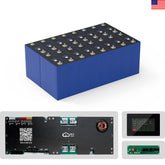

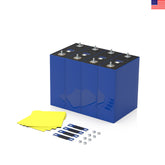
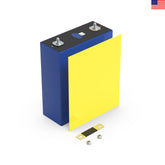
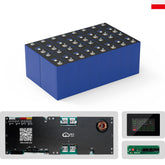

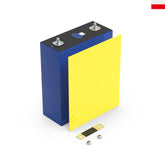

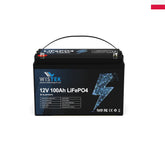
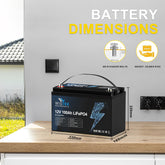
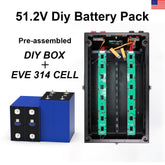

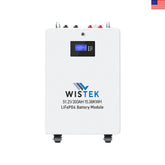
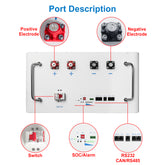
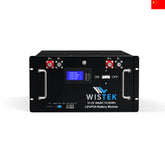
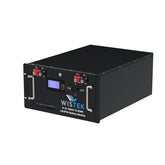
Leave a comment
All blog comments are checked prior to publishing